| Casio
PT-50 |
small
keyboard with nice analogue rhythm, accompaniment & ROM-Pack |
|
|
This was the only Casio keyboard with ROM-Pack slot but
no key lighting; instead it can load the ROM-Pack musics into an internal
sequencer, and with the optional Casio
TA-1 module it can even save them on audio cassettes. Even a RAM-Pack
cartridge
Casio
RA-1 was made for this thing to save sequencer data - I never saw
any other Casio keyboard designed for using it.
Despite this keyboard looks almost like a twin of the Casio
PT-30, there are many small differences. 3 of the 8 preset sounds
are changed, the chords and bass timbre is different and also the rhythm
set is completely different and includes fill-in. Even the LCD has different
segments and shows e.g. a "J" for major chords. Also the sequencer of this
thing was changed and is horribly awkward like with Casio
MT-70, because it apparently neither can record note lengths in
realtime nor melody and chord together, thus everything has to be entered
in different modes step by step. But by the general similarities I only
explain here the differences to the PT-30.
different main features:
-
8 OBS preset sounds {piano, harpsichord, organ, violin, flute, clarinet,
trumpet, celesta}.
-
16 preset rhythms {rock, rock'n'roll, disco, 16 beat, samba, latin rock,
bossa-nova, beguine, tango, march, waltz, rock waltz, slow rock, ballad,
swing 2beat, swing 4beat} made of analogue percussion + bass & piano
accompaniment (contains no arpeggio).
-
tempo +/- buttons (19 steps, counts 1..20)
-
different editable sequencer (no realtime recording, terribly awkward!)
-
transpose buttons (12 semitone steps)
-
different LCD display shows pressed keys and chords (only important for
the sequencer)
-
ROM-/ RAM- Pack slot (but no key lighting/ melody guide feature)
-
demo button (plays musics from the inserted ROM-Pack when present)
-
multi-chip hardware:
-
CPU= "NEC D1868G 004, 8314EK, Japan" (80 pin SMD)
-
2x SRAM= "HD B, 61914, 3D, 23" (44 pin SMD)
eastereggs:
-
To mute only the accompaniment but keep the rhythm running, keep the sequencer
memory empty and press the "one key chord" button.
modifications:
-
Power supply jack polarity changed and protection diode added.
notes:
Like the Casio MT-800, this instrument
came with the ROM-Pack RO-201
and has to load ROM-Pack musics into its internal RAM (takes a few seconds)
before it can play them. This is also valid for the demo melody, which
doesn't play with ROM-Pack removed (shows error "E -") despite the melody
keeps playing when the ROM-Pack is removed while the demo is playing. The
hardware in the small PT-50 case is even more crowded than in the similar
looking Casio PT-30, because between
panel and analogue PCB it contains even a 3rd intermediate PCB for the
digital ICs. But fortunately this daughter board at least makes the CPU
behaviour a bit easier to examine since you don't need to take out the
panel PCB (with a hand full of loose buttons flying around) to access it.
Also the LCD here is held by a sheet metal bracket that didn't exist in
the PT-30. (I haven't examined the hardware further yet.)
Some preset sounds differ from Casio PT-30:
The "organ" here has neither vibrato nor sustain, the "violin" and "flute"
here lack sustain also. The sounds "horn", "fantasy", "mellow" of the PT-30
were replaced with "clarinet" (has no vibrato), "trumpet" (like "horn"
without sustain) and "celesta" (like "harpsichord" with sustain and 1 octave
higher).
The manual organ chord voice lacks the dull organ bass component and
instead everything plays an octave lower, which sounds cheaper and more
squarewave- like. In opposite to the PT-30, here you can trill around on
different chord type buttons while holding a chord note key. (The PT-30
ignores further chord type button presses, thus you have to also release
and press again the chord note key before you can choose another chord
type, which was bad for comparing how different chords sound.) With rhythm,
the bass voice has here a low, sonorously buzzing, decaying squarewave
timbre with sustain, that reminds to an e-bass, but is also a little brassy.
The rhythms set is very different from PT-30 and unfortunately lacks the
nice arpeggio styles. But instead the rhythms now have each a fill-in pattern
with accompaniment. Annoying is that the rhythms don't start immediately
anymore after selecting them, but you have to press the "start/ fill-in"
button, which always begins with a 4 step snare lead-in before starting
the rhythm itself. Also the pattern restart trick of the PT-30 can not
be used here by the lack of "chord change" buttons.
| Casio RAM-Pack RA-1
I finally found on eBay the mysterious RAM-Pack cartridge for
the Casio PT-50. It is named Casio
RA-1 and can store apparently only one song. You can even save any
ROM-Pack song from the internal PT-50 sequencer memory to it, which is
correctly loaded back including the obligato voice.
I first hoped that it would be possible to compose own musics on the
PT-50 (or even PC through the TA-1
tape interface) and play them on other ROM-Pack compatible Casio keyboards.
However unfortunately the RA-1 seems to be incompatible with normal ROM-Pack
keyboards; they ignore it like when the ROM-Pack slot was left empty.
The RA-1 contains a 3V lithium button cell "BR-2016"; the manual claims
it would last only 1 year, but longer with RA-1 inserted into the keyboard.
(This can make only sense so far the keyboard contains batteries.) However
in PC mainboards the same kind of "CMOS" memory backup batteries last about
10 years. For battery replacement you have to open the cartridge; first
remove the slider, then unscrew the 2 tiny screws underneath.
To analyze the hardware closer, I needed to take out the PCB itself.
But the only screw holding it was jammed in so tightly, that its flat soft
iron head refused to be moved and only crumbled apart by any serious attempts
of loosening it. Thus I had to drill it out; unfortunately the thin drill
I used suddenly bent away by too much force, which made my heavy household
drill machine violently crash down into the PCB, resulting in a PCB crack
that damaged a lot of traces - arrg! Fortunately by my Casio
KX-101 nightmare repairs I was more than experienced enough to
patch them together again.
The hardware is made of 2 identical SRAM ICs "HD B 61914". Interesting
is the pin assignment; the left side of the 1st RAM exactly corresponds
to the pinout of the ROM-Pack slot, the traces are 1:1 connected with its
top side pins and with the left side of the 2nd RAM. To top row pins of
RAM 1 are all wired to +Vs. Almost all pins of the down side of both ICs
are shorted with each other. To the right side only few pins are used (apparently
for control purposes), while many others are shorted too. I assume that
the top pin row of the 61914 IC is likely NC (internally not connected)
and thus simply connected in a way that makes it easiest to route traces
from other pins underneath it on the single sided PCB.
Casio used the same IC also as internal SRAM in the PT-50, the
PT-30,
and a similar looking HD C 61914 in the KX-101. |
The ROM-Pack implementation of this keyboard is very different from
all my other Casios and a little unobvious. To select a song, press the
"R/MT" button once ("R" appears in the LCD), then type the 2 digit song
number with the rightmost keys and press "play", which copies the song
into the internal RAM (takes some seconds) and plays it. (Pressing "R/MT"
twice displays "MT" and apparently tries to load the music file from a
cassette through the optional Casio
TA-1 module.) Unlike a ROM-Pack, the RAM-Pack RA-1
ignores the selected song number, because it apparently holds only 1 song.
The "demonstration" button plays all musics from the inserted ROM-Pack
in a sequence, starting with the first. The 2nd melody voice (obligato)
of ROM-Pack musics plays a bit too quiet on my PT-50. (Warning:
Playing any ROM-Pack musics overwrites and thus deletes the actual
sequencer contents.)
Unfortunately I have no manual for this thing, but this is what I found
out. Press "chord" and then "play" to play only the chord track. Press
"melody" and then "play" to play only the main voice. To delete the sequencer
contents hold "record" and press "clear". To record your own melody into
the sequencer, hold "record" and press "melody" to enter melody recording
mode. Play the melody note by note (press "reset" to quit). Afterwards
the note lengths must be entered separately, and also chords can not be
recorded together with the melody. :-[ (No joke!
The PT-30 had no trouble with that.) To enter the note lengths,
press "play" in melody recording mode and step with the right tempo through
the melody using the "one key play" buttons until the melody ends (or press
"reset" to finish). When no note lengths are entered, the melody plays
with tremendous speed. To record chords works similar, but hold "record"
and press "chord" for the chord recording mode. To enter chord lengths
(not necessary when you played right), press play in this mode and step
forward with the "one key chord" button. To edit the sequencer contents,
enter the melody or chord recording mode again and step through your track
with the "for" button. Any new played notes or chords are inserted at the
current position. The "delete" button deletes the last played note/ chord
from the track. After edit press play in that recording mode and correct
the note lengths with the "one key play" and "one key chord" buttons again.
(Note: ROM-Pack musics contain beside melody and chord voice a 2nd
main voice called "obligato"; unlike melody and chord, this additional
voice can apparently not be edited in the sequencer.) To save the actual
sequencer contents on a RAM-Pack, press "R/MT" once and then "save".
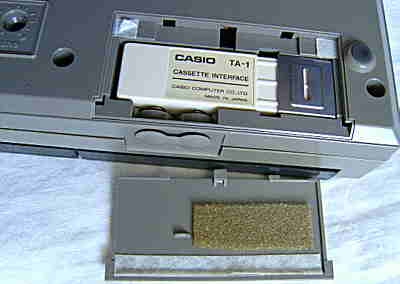 Like
the Casio PT-30, the PT-50 has an expansion cartridge slot for the
Casio
TA-1 tape memory interface to save the sequencer contents, thus
it might be possible to save with this thing ROM-Pack music data on cassettes
or upload them to a PC for further analysis or even sound emulation. Unfortunately
you can not play them through the RAM-Pack RA-1
on other ROM-Pack keyboards, because the RA-1 is incompatible with them. Like
the Casio PT-30, the PT-50 has an expansion cartridge slot for the
Casio
TA-1 tape memory interface to save the sequencer contents, thus
it might be possible to save with this thing ROM-Pack music data on cassettes
or upload them to a PC for further analysis or even sound emulation. Unfortunately
you can not play them through the RAM-Pack RA-1
on other ROM-Pack keyboards, because the RA-1 is incompatible with them. |
| removal
of these screws voids warranty... |
|
|
 |

|
|
| |
back
|
|

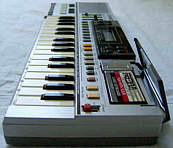


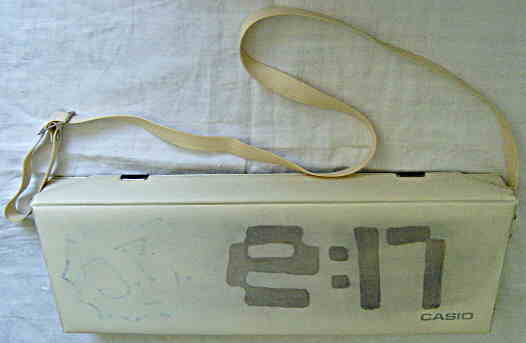
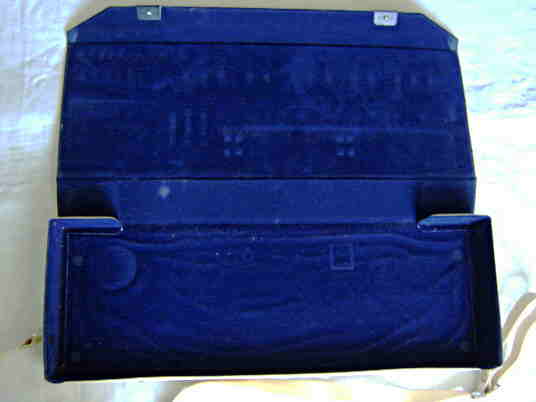
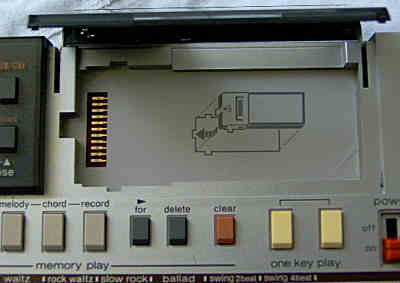
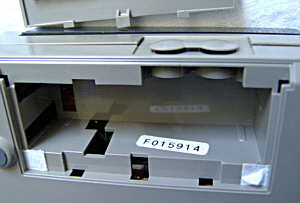
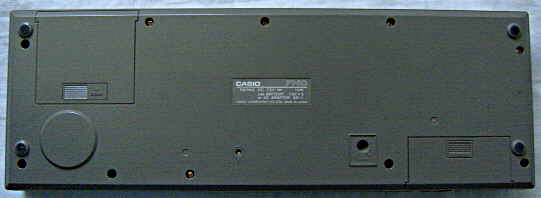
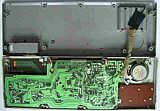
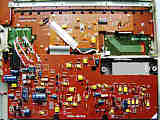


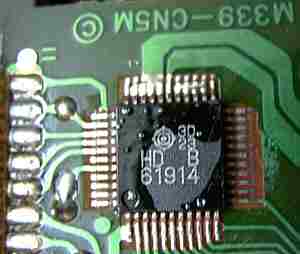
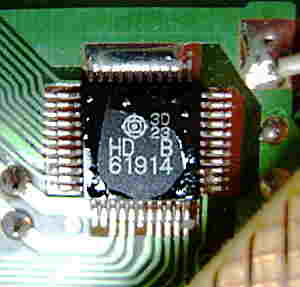
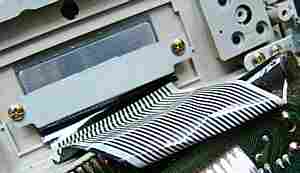
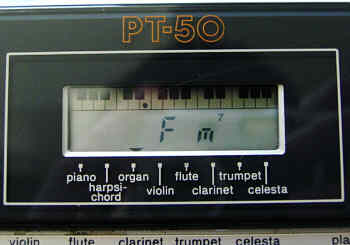
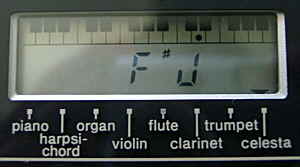
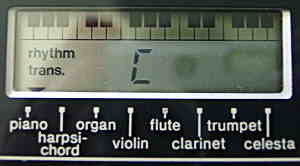
 Like
the Casio PT-30, the PT-50 has an expansion cartridge slot for the
Casio
TA-1 tape memory interface to save the sequencer contents, thus
it might be possible to save with this thing ROM-Pack music data on cassettes
or upload them to a PC for further analysis or even sound emulation. Unfortunately
you can not play them through the RAM-Pack RA-1
on other ROM-Pack keyboards, because the RA-1 is incompatible with them.
Like
the Casio PT-30, the PT-50 has an expansion cartridge slot for the
Casio
TA-1 tape memory interface to save the sequencer contents, thus
it might be possible to save with this thing ROM-Pack music data on cassettes
or upload them to a PC for further analysis or even sound emulation. Unfortunately
you can not play them through the RAM-Pack RA-1
on other ROM-Pack keyboards, because the RA-1 is incompatible with them.